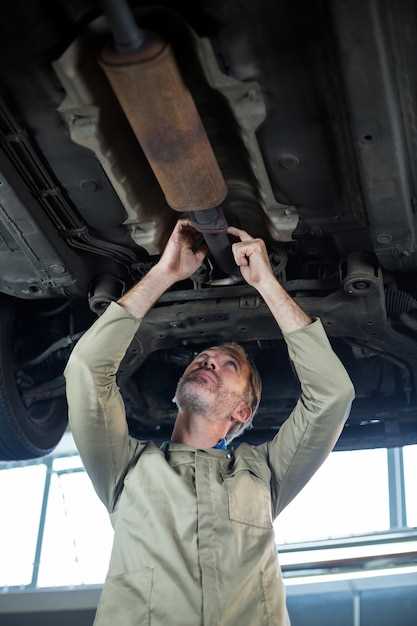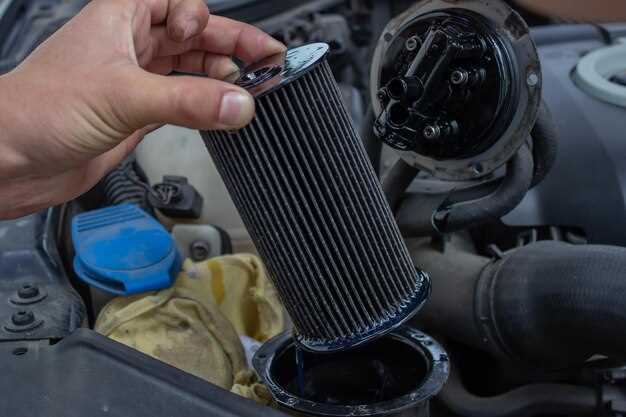
The catalytic converter plays a crucial role in reducing harmful emissions from vehicles, making it an essential component of modern automotive systems. However, this device is not immune to problems that can affect its performance. Understanding common catalytic converter issues can help vehicle owners identify and address problems promptly.
One of the most prevalent issues with catalytic converters is clogging, which can occur due to excessive buildup of exhaust deposits. When this happens, it can lead to reduced engine performance and increased emissions, ultimately requiring repair or replacement of the converter. Additionally, it’s important to recognize symptoms such as a decrease in fuel efficiency or unusual noises, as these can be indicators of a failing catalytic converter.
Fortunately, various solutions exist for addressing catalytic converter problems. Regular maintenance, including checking for leaks and ensuring optimal engine performance, can prolong the life of the converter. In more severe cases, professional assessment may be necessary, leading to necessary repairs or, if absolutely needed, replacement of the catalytic converter to restore vehicle functionality and compliance with emission standards.
Identifying Common Symptoms of Catalytic Converter Failure
Recognizing the symptoms of catalytic converter failure is crucial for timely repairs and maintaining vehicle performance. One of the most common indicators is a significant drop in engine power. If the vehicle struggles to accelerate or exhibits sluggishness, it may point to a clogged catalytic converter, restricting exhaust flow.
Another prevalent symptom is the check engine light illuminating on the dashboard. This indicator can signal various issues, but if accompanied by performance problems or strange noises, it may suggest catalytic converter malfunctions. Diagnostic trouble codes (DTCs) retrieved from the vehicle’s computer can help pinpoint the exact issue.
Additionally, an unusual smell, often described as sulfur or rotten eggs, can indicate the converter is failing. This odor is a result of unburned fuel or other emissions not being adequately processed within the converter. It’s a signal that repair might be necessary to avoid further engine damage.
Another symptom to watch for is overheating of the engine, which can result from back pressure caused by a faulty catalytic converter. This overheating can lead to significant engine wear or even complete failure if not addressed promptly. Regular inspections and maintenance can help identify these issues early and prevent costly repairs.
Lastly, a notable decrease in fuel efficiency can also point to catalytic converter issues. If the vehicle consumes more fuel than usual without an increase in driving distance, it’s essential to have the catalytic system checked. Addressing these symptoms promptly can prevent further complications and ensure optimal vehicle performance.
Step-by-Step Guide to Diagnosing Catalytic Converter Problems

Diagnosing issues with your vehicle’s catalytic converter is essential for maintaining optimal performance and compliance with emissions standards. Follow these steps to identify potential problems effectively.
Step 1: Check Engine Light – Begin your diagnosis by scanning for error codes. If the check engine light is illuminated, use an OBD-II scanner to retrieve codes that may indicate converter inefficiency or failure.
Step 2: Visual Inspection – Conduct a thorough visual inspection of the catalytic converter and associated exhaust components. Look for signs of damage, rust, or any physical obstructions that might affect exhaust flow.
Step 3: Monitor Engine Performance – Pay attention to how the vehicle runs. Symptoms like sluggish acceleration, rough idling, and decreased fuel efficiency often correlate with converter issues.
Step 4: Temperature Test – Use a thermal sensor to measure the temperature before and after the catalytic converter. A significant difference (usually over 100°F) between the inlet and outlet temperatures can indicate a clogged converter.
Step 5: Exhaust Backpressure Test – Perform an exhaust backpressure test to determine if there’s excessive pressure build-up before the converter. An engine with a functioning converter should not exceed 1-2 psi of backpressure at idle.
Step 6: Diagnostic Tools or Professional Help – If initial checks do not identify the problem, consider using specialized diagnostic tools or consult a professional mechanic who can perform in-depth testing and analysis.
Step 7: Evaluate Repair Options – Once the issue is diagnosed, assess your repair options. Depending on the extent of the damage, you may need to clean, replace, or repair the catalytic converter.
Repair Options and Costs for a Malfunctioning Catalytic Converter

When dealing with a malfunctioning catalytic converter, there are several repair options available, each varying in cost and effectiveness. Understanding these options can help you make an informed decision.
One of the most common solutions is to perform a thorough inspection to identify the specific issue. In some cases, the catalytic converter may simply be clogged due to excessive carbon buildup. A professional cleaning can often resolve this problem, and the cost for this service typically ranges from $150 to $300.
If the catalytic converter is damaged or defective, replacement may be necessary. The cost for a new catalytic converter can vary widely depending on the make and model of the vehicle. On average, you can expect to pay between $800 and $2,500 for parts and labor. OEM (original equipment manufacturer) converters tend to be more expensive than aftermarket options.
In certain situations, a temporary fix may involve the use of a repair kit designed for catalytic converters. These kits can cost between $50 and $100, providing a budget-friendly option. However, they may only offer a short-term solution and might not meet emissions regulations.
It’s important to note that ignoring catalytic converter issues can lead to more severe engine problems. Regular maintenance and timely repairs are crucial. Always consult with a qualified mechanic to assess the best repair approach for your specific situation.




